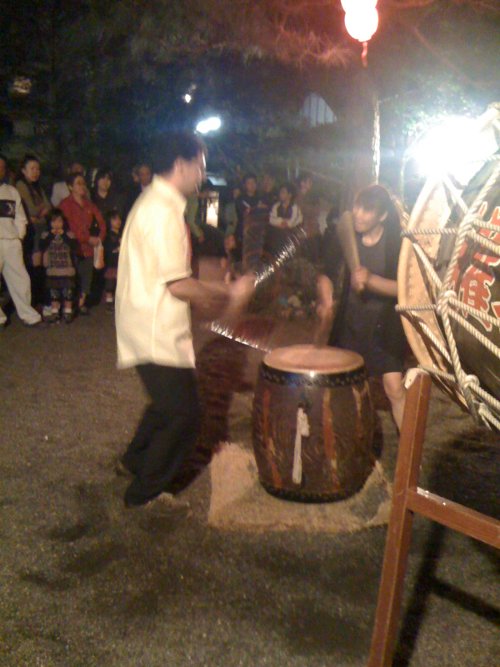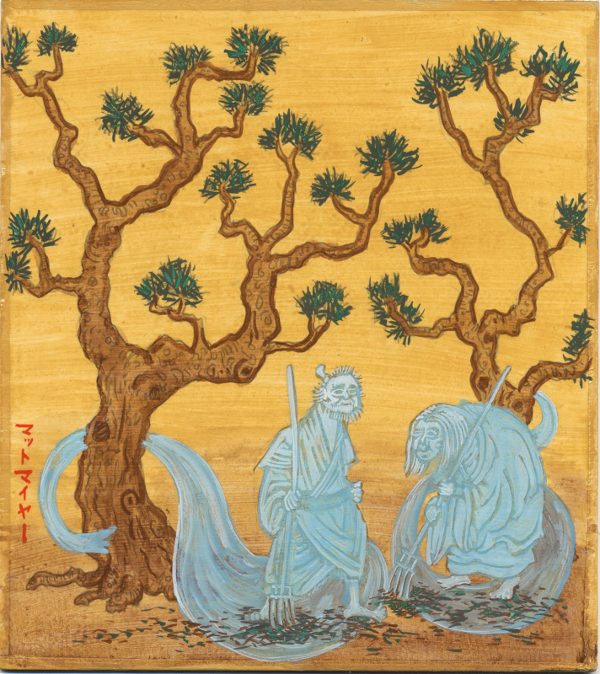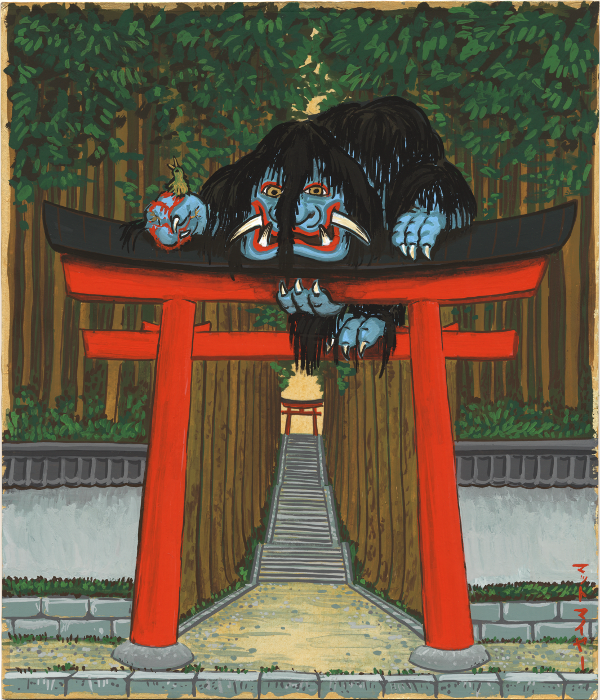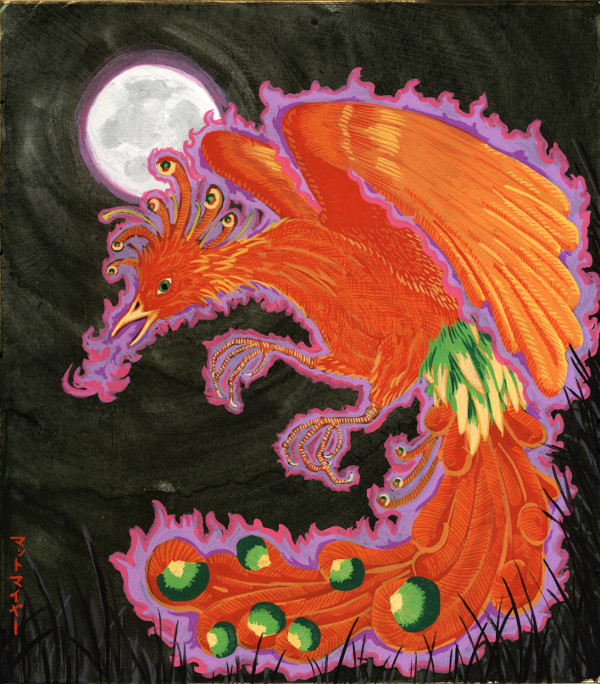Anyone who has been to a Japanese festival will tell you that they are one of the coolest events in the world; the perfect mixture of ancient tradition and modern fun. That is even more true in the countryside, where the festivals are not tourist attractions or economic events, but just a way for the local people to get together and celebrate life together. If you haven’t ever been to one, you need to try to imagine an ordinarily plain and sleepy country town, with 100-year old wooden-facaded shops lining the cobblestone streets, ancient wooden temples and shrines straddling the border between the village and the sheer, forested mountain ranges. Then imagine the sleepy village suddenly springing to life at night, like out of some fantasy story. The empty streets are now lined with bright and colorful food stalls reminiscent of some kind of electric renaissance fair, the smell of various foods, the shouts of food vendors and game stands beckoning you to come, and more people than you could have imagined actually live in this tiny little hamlet. And then, at the end of the street, the big vermilion archway at the entrance to the shrine is lit up with spotlights so it commands the whole neighborhood.

…welcoming you to the shrine
Tonight was the autumn festival in Imadate, and it’s hard to describe the experience in words, but I will try my best.
Coming from the shrine grounds came the thundering sound of taiko drums. But this wasn’t some concert with professional musicians. This was just a pair of drums and a couple of townsfolk going crazy on the drum, dancing wildly and still wearing their work clothes. We stayed and watched for a while, and after few minutes of watching people jump in and out of the drum circle, some carrying their own sticks, others swapping off, it became clear to me that this was a free-for-all. At first there was a young construction worker in his coveralls playing with an 80 year old grandfather wearing a Karate Kid-style headband. When one got tired, he switched out with a 20-something girl with dyed hair, wearing trendy street clothes and plastic platform sneakers and a miniskirt — and she was so good I was blown away. The people kept rotating: a local flower shop owner, parents, kids, and eventually an office lady still wearing her stockings and suit (though she had taken off her shoes and was walking around in the dirt barefoot) took charge and began drumming like nobody had ever drummed before. At some point, being a shrine, the noisy droning reed instruments you can always hear at Shinto ceremonies began playing too, and then some other people began playing a samba beat on their own latin drums that they had brought to the festival. It was bizarre, but it all blended together in a really cool way.

It takes real spirit to play the drums wearing that!
Eventually, being one of if not the the only foreigner there, I was asked to drum too. I said no at first, but then they grabbed me and literally dragged me to the drum and put the sticks in my hands. Craziness!

Here I am, coerced into playing too…

Old meets new — I love this juxtaposition.
Unfortunately my phone isn’t so great at taking night photos, so these don’t really capture the full spirit of the event, but it was one of those times where you can really feel the soul of Japan. The modern mixed with the old, a sense of community and unwinding after a hard days work, outdoors and being one with nature, completely unashamed to play drums like an idiot in front of complete strangers. There’s something spiritual about that.
And my telling you about souls and spirits is my roundabout way of introducing today’s yokai:
Kodama
This is a very famous and popular yokai, both in and out of Japan. They’re most well known for the role they played in the Studio Ghibli animation “Princess Mononoke,” which hopefully you’ve seen if you have any interest in Japan at all. Ghibli’s kodama are cute little fairy-like spirits who cockle their heads sideways and make funny rattling sounds.
The name kodama means tree spirit, and they are said to be both the guardians of trees, and the soul of the actual tree itself. They are sort of a parallel to ancient Greece’s dryads, although if I recall correctly, dryads can do some nasty things to humans, while kodama are quite peaceful.
Kodama are formed (born?) when a tree reaches an advanced age. In fact, there are many myths about objects turning into yokai (tsukomogami) after their 100th birthday, or animals developing magical abilities after a certain number of years; this is the tree equivalent of that. This makes a lot of sense when you consider the important role that one’s elders and the ancestors play in Japanese society.
Deciding how to paint these was a bit of a challenge. I didn’t want to copy the Ghibli kodamas — although they are absolutely adorable, 1) there isn’t really any “folkloric basis” for them looking like that, and 2) I didn’t want to steal that particular image of kodama. Finally, I was able to find Toriyama Sekien’s painting of kodama from his yokai bestiaries, and he presented them as eldery human-like spirits. I really liked that concept, as it goes well with the idea of protector spirits and aged trees, so I based my kodama after an eldery couple. I really wanted to capture the spirit I felt at tonight’s festival. I also happened to come across some acrylic gradation medium the other day, which made painting ghost-like figures an absolute joy!
And now I’ve said enough and it’s time to sleep. Here are kodama:

Kodama
Just one more reminder: the first batch of this year’s yokai are posted and available on my Etsy page! I’ll be posting a 2nd batch soon, but in the meantime you can pick up those first prints now.
Thanks for watching!
「今日の妖怪シリーズ」今日は木霊です。木霊は有名でよく知られている妖怪で、宮崎駿監督の「もののけ姫」にも登場しています。この作品に登場する木霊はカタカタという不思議は音を立ててながら木の下でたたずずんでいるかわいらしい妖精のような姿をしています。
木霊の名前の意味は、木の精で、木を守護しているものでもあるか、もしくは生きている木の魂そのものでもあります。ギリシャにも木の精(dryads)のお話がありますが、日本の木霊は平和的なのに対してこのdryadsは人間に対して悪いこともします。
木霊は高齢になった時に生まれます。これは、100年経過した物に神や霊魂が宿るという付喪神(つくもがみ)や、同じような伝承にある動物などと同様なもので、木に宿るものと考えられます。日本の社会で高齢・長寿である事は、敬われるべきであるという事が背景にあるのでしょう。
今回、木霊を描くという事は一つのチャレンジでした。「もののけ姫」の木霊はとてもかわいく、伝承をもとにしたものではなく映画のために創造されたものでした。私はこのイメージを盗んでコピーすることはしたくありませんでしたので、木霊について沢山のリサーチを行いました。そして終に鳥山石燕(とりやませきいん)の描いた、年老いた人間の精霊の姿の木霊を見つけたのです。
年老いた木の精として年老いた人間の姿がうまく合っていて私はこれだと思いました。そして、今日訪れた粟田部祭りで感じた精神をこの絵に写したいと感じました。それでは、今日の妖怪「木霊」を楽しんでください!






